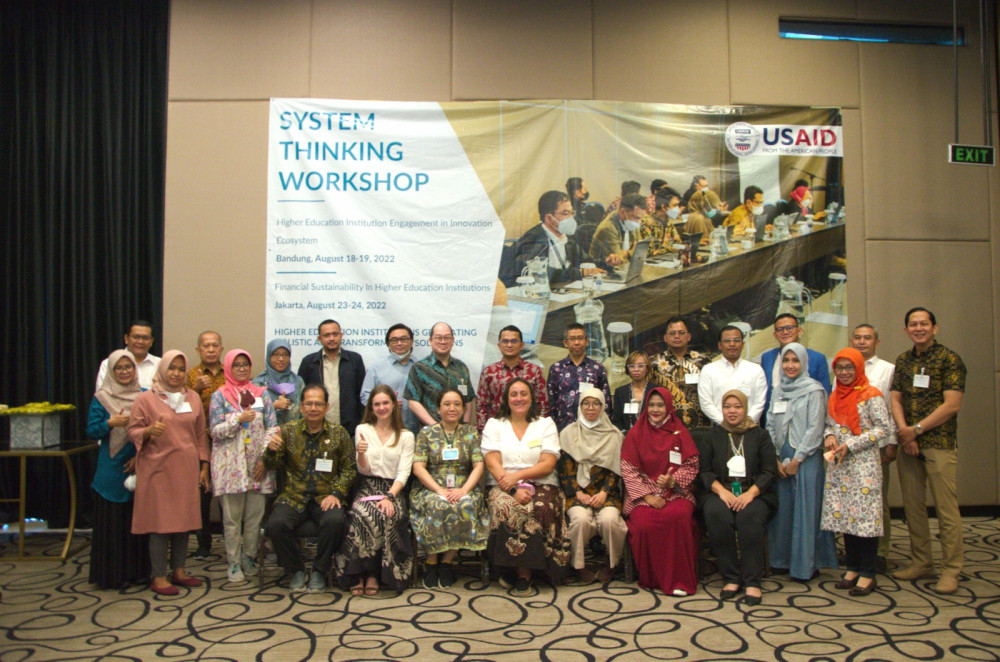
By Mardianto Natanael Wangkanusa I 04/04/2023 I 10.00 AM
Sustainability is commonly perceived and often referred to as the issue of the environment. As originated from environmental concerns, this word, this concept rather shifted and developed into a new one which is unified with social and economic aspects known as ‘sustainable development’ by the end of the twentieth centuries (Kuhlman, et al., 2010; Vinilon Group, 2022; McGill University, 2023). The Brundtland Commission report of Brundtland (1987) initially defined Sustainable development (SD) and highlighted three pillars of sustainability: society, environment, and economy.
This followed the United Nation (UN) innovative approach of Agenda 2015-2030 distributing three pillars to each of the 17 sustainable development goals, such as: 1. Eliminate Poverty; 2. Erase Hunger; 3. Establish Good Health and Well-Being; 4. Provide Quality Education; 5. Enforce Gender Equality; 6. Improve Clean Water and Sanitation; 7. Grow Affordable and Clean Energy; 8. Create Decent Work and Economic Growth; 9. Increase Industry, Innovation, and Infrastructure; 10. Reduce Inequality; 11. Mobilize Sustainable Cities and Communities; 12. Influence Responsible Consumption and Production; 13. Organize Climate Action; 14) Develop Life Below Water; 15. Advance Life on Land; 16. Guarantee Peace, Justice, and Strong Institutions; 17. Build Partnerships for the Goals (UN, 2015).
As one of the pillars of sustainable development, economic sustainability often falls under a similar definition to financial sustainability. To put them in context, however, the former has a broader scope. Economic sustainability is perceived as both nationwide and single-company long-term practices of development with an impact on the environment and society. (Prysmian Group 2023; Simone Nulli Rinalducci, 2023; University of Mary Washington, 2023). Financial sustainability, however, is applicable for the smaller scope as pointed out by Gleißner et all., that
“While economic sustainability covers all topics related to intergenerational and intragenerational economic considerations (with the goal of ensuring the long-term existence of the company)—including a wide range of different management functions such as procurement, production, logistics and marketing— ……. financial sustainability as dealing solely with the company’s long-term financial security as an important part of the overall goal of sustainability.” (2022).
In business sectors, financial consideration is the major survival factor. Studies have shown that the concept of sustainability is often associated with the financial management of companies or institutions in order to survive in the long run. This includes Higher Educational Institutions (HEIs). Many publications have brought up financial sustainability in Higher Education Institutions, both public and private, in the past few decades (Afriyie, 2015; 15; Lucianelli, 2017; Cernostana, 2018; Modugno, et al., 2019). In the context of Indonesia, the publication is significantly limited indicating the gap of knowledge related to this topic. Although sustainability is recently encouraged in Indonesian higher education institutions, studies on financial sustainability seem neglected.
Currently, SMART CITY Universitas Indonesia collaborates with University of Notre Dame (UND) through Supporting Holistic & Actionable Research in Education (SHARE) under USAID Funding in identifying strategies to promote financial sustainability in Higher Education Institutions (HEIs). This study aims to produce evidence-informed strategies for sustainably strengthening higher education (HE) financing systems by analyzing the ways in which governments and higher education institutions (HEIs) are mobilizing public and private resources. It focuses on analyzing both HEI financial operations and capturing system-level opportunities and challenges by taking care to situate HEI financing within the larger enabling environment of policy, regulation, and funding. The analysis will differ based on the categorization of HEIs, such as Private or Public HEI, as well as the type of HEIs such as Polytechnic, TVET, or Universities/Institutes. In this study financial sustainability refers to a higher education institution that is financially sustainable when it is able to fund its operational and maintenance costs to: 1) produce valued results aligned with its mission and 2) achieve resilience over time. This study will also assess the resiliency of the institution to overcome shock such as Covid 19 back then and investigate which risk mitigation strategy that fit the best for each type of HEIs.
This study will fill the gap of knowledge on financial sustainability focusing on Higher Education Institutions in Indonesia as the objective of this study which promotes sustainable financing practices. Moreover, it will provide knowledge on risk management, particularly on strategic and holistic management approaches applied in the education sector to become financially sustainable. The study will be a basis for USAID Higher Learning Agenda especially in Low-and-Middle-Income Countries.
References:
-
Afriyie, Amos Oppong. "Financial sustainability factors of higher education institutions: a predictive model." International Journal of Education Learning and Development 2, no. 3 (2015): 17-38.
-
Al Kharusi, Sami. "Financial Sustainability of Private Higher Education Institutions: The case of publicly traded educational institutions." Investment Management & Financial Innovations 14, no. 3 (2017): 25.
-
Cernostana, Zanna. "Measuring financial sustainability of private higher education institutions." Engineering for rural development (2018): 1173-1178.
-
Dalampira, E. S., & Nastis, S. A. (2020). Back to the future: simplifying Sustainable Development Goals based on three pillars of sustainability. International Journal of Sustainable Agricultural Management and Informatics, 6(3), 226-240.
-
Gleißner, W., Günther, T., & Walkshäusl, C. (2022). Financial sustainability: measurement and empirical evidence. Journal of Business Economics, 92(3), 467-516.
-
Kuhlman, Tom, and John Farrington. 2010. "What is Sustainability?" Sustainability 2, no. 11: 3436-3448. https://doi.org/10.3390/su2113436
-
Lucianelli, Giovanna, and Francesca Citro. "Financial Conditions and Financial Sustainability Financial Financial Sustainability in Higher Education Higher Education: A Literature Review." Financial sustainability in public administration: Exploring the concept of financial health (2017): 23-53.
-
McGill University. 2023. What is sustainability?”. Available: https://www.mcgill.ca/sustainability/files/sustainability/what-is-sustainability.pdf
-
Modugno, Guido, and Ferdinando Di Carlo. "Financial sustainability of higher education institutions: A challenge for the accounting system." Financial Sustainability of Public Sector Entities: The Relevance of Accounting Frameworks (2019): 165-184.
-
Vinilon Group, 2022. “Sustainability Concept: Not Only Environmental Aspect”. Available: https://vinilon.com/en/news_events/sustainability-concept-not-only-environmental-aspect/
